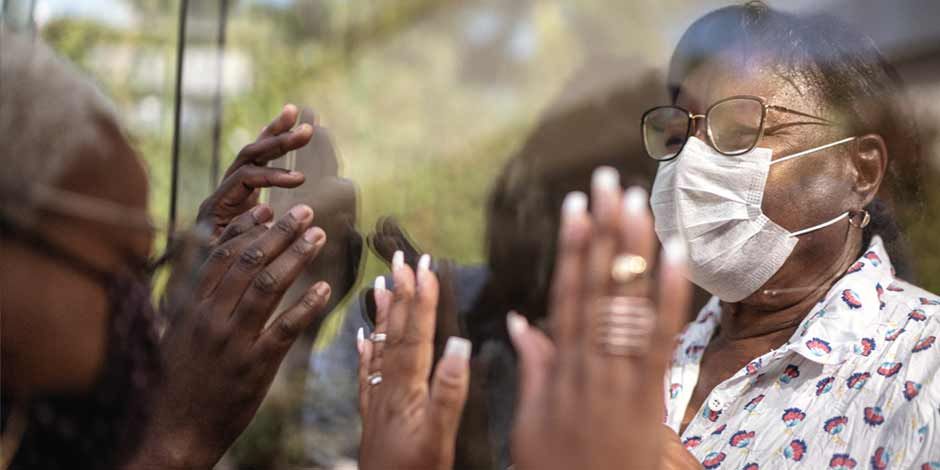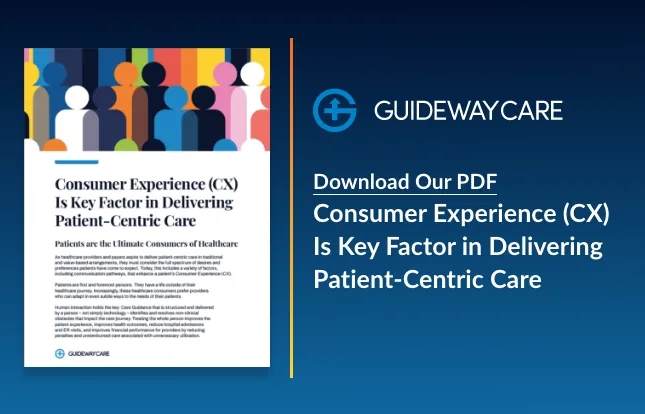Addressing COVID-19 Health Disparities While Lowering Nursing Demands

In July 2020, the COVID-19 Health Disparities Action Act of 2020 was introduced to Congress to help address the inequality in outcomes impacting minority populations. But the hard work of closing care gaps is still left to nurses.
In July 2020, the COVID-19 Health Disparities Action Act of 2020 was introduced to Congress. With a growing body of evidence pointing to the pandemic’s outsized impact on communities of color and ethnic minorities, The Act directed the Centers for Disease Control and Prevention (CDC) to award grants and the Office of Minority Health to develop a plan to address COVID-19’s disparate impact [1]. American Indian or Alaska Native, Black, and Hispanic or Latino people have an almost four times higher COVID-19 hospitalization rate than non-Hispanic Asian and non-Hispanic White people. When age is factored in, American Indian or Alaska Native, Black, and Hispanic or Latino people are sicker at a younger age and have higher complication rates [2].
Since last July, numerous studies, programs, and grants have been initiated, all with the aim of understanding and addressing COVID-19’s amplification of health inequities. At the core of this challenge is an intractable problem—socioeconomic barriers to care. A recent University of New Hampshire policy brief noted that Black and Latino workers have not only suffered from significant upticks in unemployment, but they have also been disproportionately overrepresented among workers who cannot work from home [3]. Those who have been able to retain a job during the pandemic are more likely to be in-person workers who are at greater risk of virus exposure and disproportionality burdened by child and dependent care [3]. As a result, minority populations have struggled to manage COVID-19 with less access to resources, more significant obstacles to engaging with the healthcare system, and fewer community outlets to help bridge gaps.
For the most part, providers have borne the brunt of the responsibility for addressing barriers to care. Clinician burnout was an issue before COVID-19. Administrative tasks, technology demands, compliance requirements—all pulled clinicians away from the job of treating patients. Nurses, in particular, have been tasked with addressing the non-clinical, practical issues impacting patient compliance and outcomes. Things like transportation, appointment reminders, and food access require hours of communication and coordination. During a recent Guideway Care discussion with one of the nation’s largest academic medical centers, nurses reported that up to 70% of their workload is dedicated to non-clinical, practical tasks like scheduling follow-up visits and ensuring transportation. The pandemic has exacerbated clinician burnout and made the challenge of addressing practical gaps in care exponentially harder. Some are calling the increased clinician burnout attributed to COVID-19 a “mental health pandemic within a pandemic” that, if not addressed, could result in clinician shortages, medical errors, and poor health outcomes [4].
To address the disparities created by COVID-19 and, in particular, the amplified socioeconomic barriers to care, providers have made significant investments in analytics and technology. Analytics, which span descriptive, predictive, and prescriptive, are helping providers understand the problem and foresee potential areas of increased risk. Investments in technology are helping to document and track the problem and connect community resources and providers.
Analytics and technology are a step in the right direction, but they alone cannot bridge care gaps. Analytic solutions tend to group individuals into risk cohorts. What COVID-19 has highlighted is the degree to which these cohorts overlap, and the blind spots created by undocumented risk. Technology solutions fail to address a patient’s motivation and ability to address barriers and gaps in care. There is an assumption that easy access will drive adoption. But data paints a more complex picture with variations across race, age, and socioeconomic status [5] [6]. Most problematic is the fact that both analytic and technology solutions rely heavily on nurses to interpret analytics, adopt technology, and action insights thereby adding burdens to an already overburdened segment of the care workforce.
One of the most effective ways to address health inequities is by linking analytics and technology with non-clinical care guidance. This combination delivers a path to more effectively and quickly lowering barriers to care, improving patient compliance with care plans, and lowering demands on clinicians with a specific focus on freeing nursing capacity. And in the wake of COVID-19, it is critical that a solution is turn-key—that it can fit seamlessly with a provider’s existing workflow and adapt to the nuances of the facility or practice.
Our experience over the past year has demonstrated that a mature, comprehensive care guidance approach can help drive:
- A provider’s financial viability by increasing/maintaining new patient volumes and reducing patient leakage;
- Improvements in quality outcomes by ensuring compliance and lowering barriers to care;
- And increased clinician satisfaction by lowering cognitive demands and opening capacity to focus on high-value work.
We have also seen how a comprehensive care guidance program can uncover COVID-19 related risks such as depression resulting from social isolation.
To fill gaps in care, guidance is effective and delivers the lowest total cost of performance for the provider, the patient, and the healthcare system overall. By moving practical tasks to non-clinical workers, nurses are freed up to perform at the top of their licensure. And by creating a peer-patient relationship, which is cultivated through multiple interactions, care guidance can address the barriers to care that are driving risk and exacerbating health inequities.
Citations
| [1] | 116th Congress, “S.4262 – COVID–19 Health Disparities Action Act of 2020,” Congress.Gov, 22 07 2020. [Online]. Available: https://www.congress.gov/bill/116th-congress/senate-bill/4262?s=1&r=7. [Accessed 4th March 2021]. |
| [2] | Centers for Disease Control and Prevention, “Disparities in Hospitalizations.,” 10 December 2020. [Online]. Available: https://www.cdc.gov/coronavirus/2019-ncov/community/health-equity/racial-ethnic-disparities/disparities-hospitalization.html. [Accessed 03 March 2021]. |
| [3] | R. S. C. Sparks, “The Inequities of Job Loss and Recovery Amid the COVID-19 Pandemic,” University of New Hampshire Carsey School of Public Policy, 11 August 2020. [Online]. Available: https://carsey.unh.edu/publication/inequities-job-loss-recovery-amid-COVID-pandemic. [Accessed 03 March 2021]. |
| [4] | P. A.-C. F. F. F. Bernadette Mazurek Melnyk, HemOnc Today, 03 November 2020. [Online]. Available: https://www.healio.com/news/hematology-oncology/20201103/clinician-burnout-a-mental-health-pandemic-within-a-pandemic. [Accessed 03 March 2021]. |
| [5] | J. Cohen, “Black, older patients less likely to use hospital patient portals,” Modern Healthcare, 17 July 2019. [Online]. Available: https://www.modernhealthcare.com/information-technology/black-older-patients-less-likely-use-hospital-patient-portals. [Accessed 04 March 2021]. |
| [6] | M. M. P. Kea Turner, M. P. Alecia Clary, M. P. Young-Rock Hong, M. M. P. Amir Alishahi Tabriz and M. M. P. Christopher M Shea, “Patient Portal Barriers and Group Differences: Cross-Sectional National Survey Study,” J Med Internet Res, vol. 22, no. 9, 2020. |
Contact Us Today To Learn How We Can Help
"*" indicates required fields




